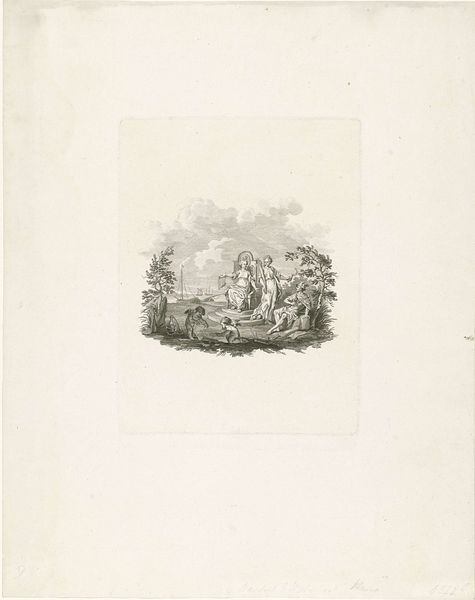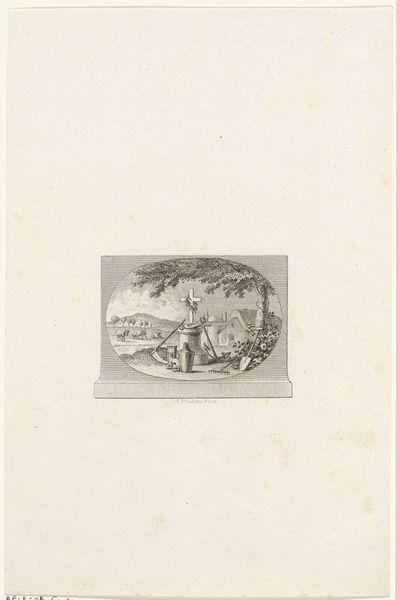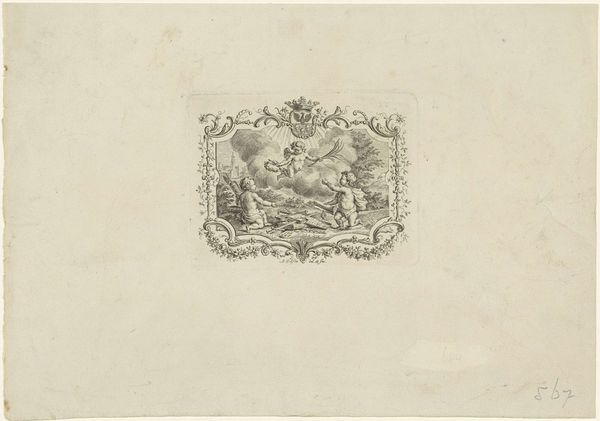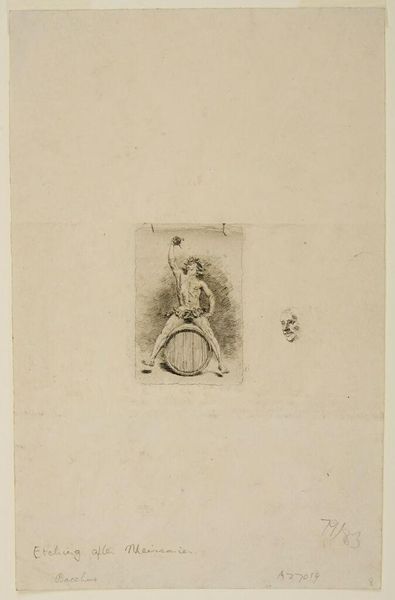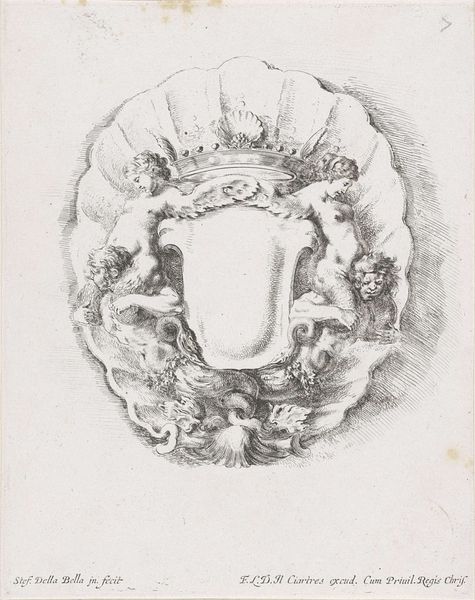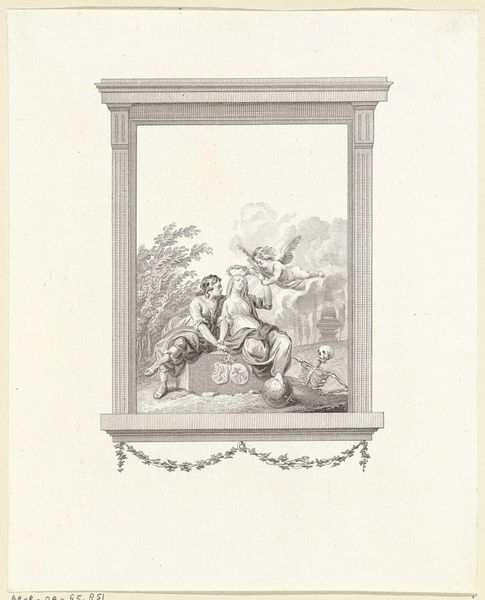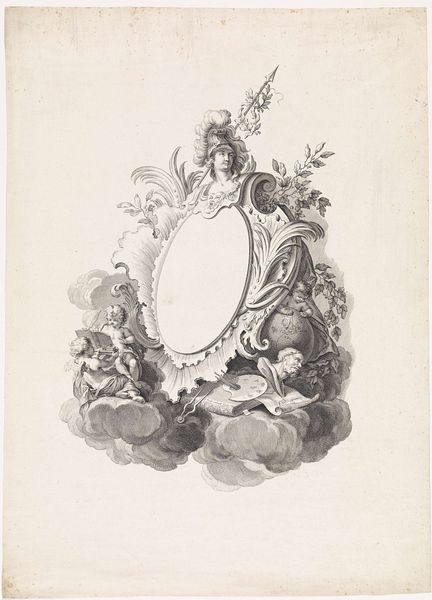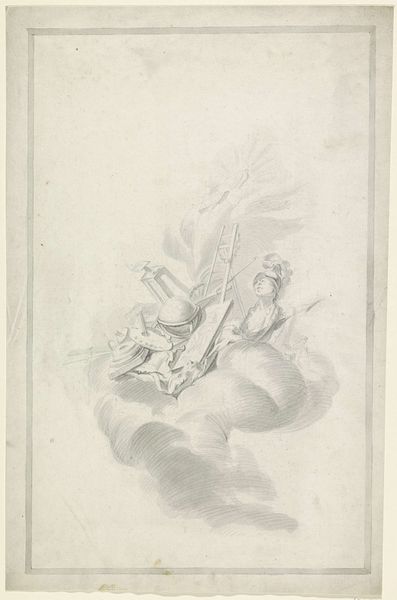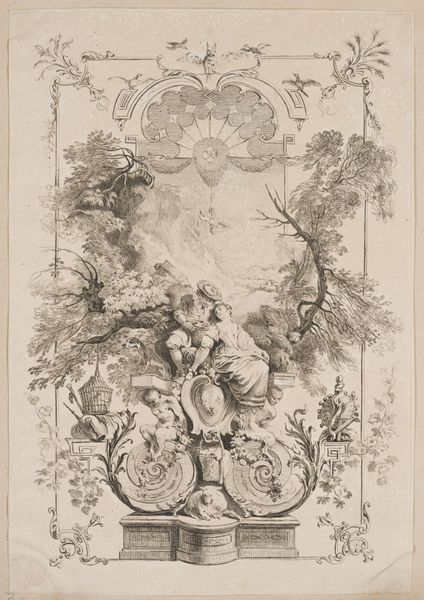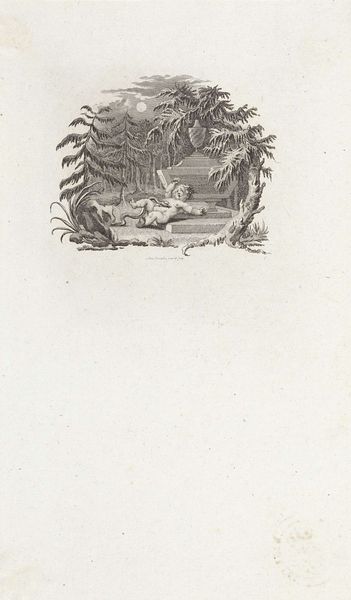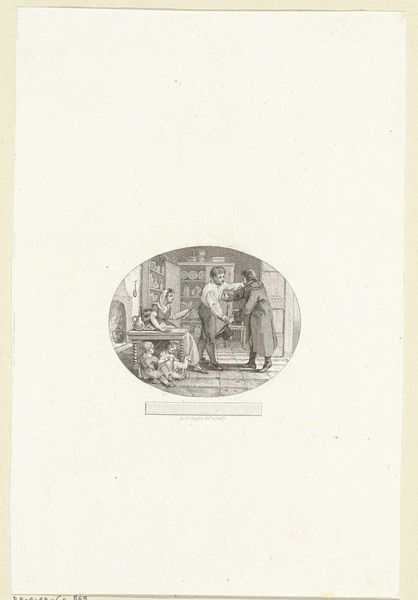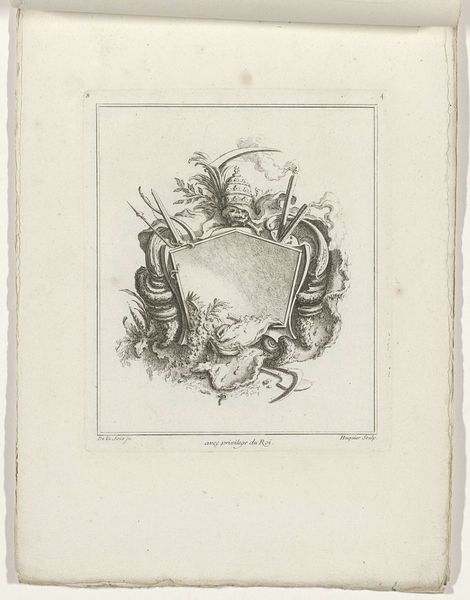
#
pencil drawn
#
light pencil work
#
shading to add clarity
#
pencil sketch
#
old engraving style
#
etching
#
ink drawing experimentation
#
pen-ink sketch
#
sketchbook drawing
#
pencil work
Dimensions: height 133 mm, width 92 mm
Copyright: Rijks Museum: Open Domain
Curator: Oh, my! This just tickles me. It’s like a sweet little secret whispered from another time, all delicate lines and playful cherubs. Editor: We're looking at "Three Putti around a Medallion," a work attributed to Simon Fokke, likely created sometime between 1722 and 1784. Currently, this drawing resides here in the Rijksmuseum. I am immediately drawn to the circular framing device, how it concentrates the gaze. Curator: A circle indeed – a porthole into something delightful! I see them there, the cherubs... such mischievous glee in their eyes. Like they’re about to drop a water balloon on someone important. Editor: The putti introduce an element of classical allegory; a sort of ornamentation popular during that era. I notice, too, the contrast between the sketch-like quality and the precision with which details are rendered; note the textures of the foliage versus the smooth skin of the cherubs. Curator: I feel the paper practically humming with Fokke's quick hand – he captures this fluttery sense of movement. The light, feathery strokes—I can almost smell the ink and paper! Editor: This sense of "movement" is largely created by the layering of shading, lending a depth that transcends simple line work. Also note how the emptiness inside the medallion invites projection; what significance do we find in this vacant space? Curator: Ooh, now there's a question. A blank canvas for the dreams of little angels perhaps? A mirror reflecting only pure possibility? Or maybe, just maybe, it was intended for a portrait but Fokke simply got distracted by all those delicious cherubs. Editor: Perhaps it is a conscious choice, allowing the viewer to engage in a form of visual completion. This resonates, interestingly, with minimalist approaches to spatial and symbolic articulation that recur in artistic expression throughout history. Curator: Right, and it really feels complete. The composition carries this beautiful completeness...like catching a soap bubble before it bursts, containing the colors in thin film of hope! Well, I have to admit, I'm rather taken by those cherubs and all the hidden stories nestled in those lines! Editor: Indeed, its artistic achievement lies precisely in that equilibrium between technical mastery and poetic license. An engaging conversation, certainly, about historical representation!
Comments
No comments
Be the first to comment and join the conversation on the ultimate creative platform.
